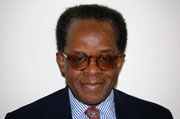
Can Black America’s middle class be saved?
By Lee A. Daniels, George Curry Media Columnist
I don’t mean the small class of wealthy Black Americans or Black upper-middle class Americans who earn hefty salaries and whose net-worth runs into the millions of dollars. In today’s more open American society, they’ll do fine economically. I mean that considerable number of Blacks who earn five-figure to low six-figure salaries and whose wealth consists almost completely of the value of the home they own.
Will they survive? And if many of them don’t, what will that mean for Black America as a whole?
That question has been hanging like a thundercloud over the American horizon ever since the recession of 2001 undermined a bright promise of the prosperity the country enjoyed during the 1990s: that significant numbers of Black Americans were finally gaining a secure foothold in the middle class.
Blacks as a group never recovered from that recession, and the subprime housing crisis and the Great Recession that gripped the country just before President Obama won the White House, made matters much, much worse.
That was so for many, many Americans, of course – in part because the fierce economic shock intensified the dynamic of income inequality that had been shadowing the economy for decades. The title of a new study the Pew Research Center released this month makes the larger point in stark terms – “The American Middle Class Is Losing Ground: No longer the majority and falling behind financially” it declares.
If the American middle class as a whole is losing ground, the Black American middle class as a whole must be standing on the edge of a cliff – with a gale wind blowing.
The report’s data and statistics from other sources confirm that notion’s validity. (Using a three-person household as the standard, the study defines the middle-income range as stretching from $42,000 to $126,000 annually, with lower-income and upper-income households below and above that range, respectively.)
It found in general terms that for the first time in nearly a half-century middle-income Americans no longer comprise the majority of the population. Instead, they now comprise 49.9 percent of the three broad income groups.
This may seem a minor point. But, for one thing, middle-income Americans have been steadily losing ground – as income inequality has been increasing – since 1971, when they made up 61 percent of the population.
For another, not only have both the lower-income and the upper-income sectors grown in population but the growth in each of them has been concentrated at the furthest extremes of their boundaries – where the poorest of the poor and the very richest of the rich reside.
The upper-income sector has experienced the most growth; it now makes up 21 percent of the population. But even more important is the growing concentration of both income and wealth at the very top of the society. Upper-income households took in nearly half the total income realized by all households last year, while middle-income households gained 43 percent of the total income and lower-income households took just 9 percent.
Finally, since 1983, only upper-income households recorded “notable gains” in wealth, widening the wealth gap between that sector and other Americans.
It’s no coincidence that the wealth gap between Blacks and whites has also increased during the very period that economic inequality has increased generally. The economic pressure besieging the Black middle-income sector has been the more severe because it’s exacerbated by the persistence of racial discrimination in the job, housing and education markets.
Among other things, that means the Black unemployment rate (currently at 9.4 percent) is consistently close to twice the national average (5 percent); some companies remain largely closed to Blacks, especially in terms of more prestigious, better-paying positions; Blacks encounter discrimination in both the rental and homeownership markets, and pay more than whites for the housing they get; and the persistence of discrimination limits their ability to raise capital for starting or expanding businesses they own.
America’s claim to greatness has always rested heavily on the promise of the opportunity to gain financial stability and comfort – of becoming “middle class.”
The New Deal response to the Great Depression of the 1930s made that promise explicit government policy and ushered in a crucial decades-long period when the burgeoning American middle-class represented the best of what made America great – expanding opportunity in a way that benefited the whole society. That, in turn, underscored the role of the middle class as a bulwark of social stability and an engine of equality. That’s the role a sizable Black middle class could be expected to play as well for Blacks and the entire society.
That’s why the final answer to the question-can the Black middle class be saved? -is so vital to Black Americans and America as a whole.


Be the first to comment